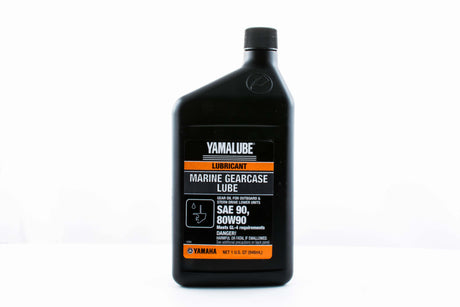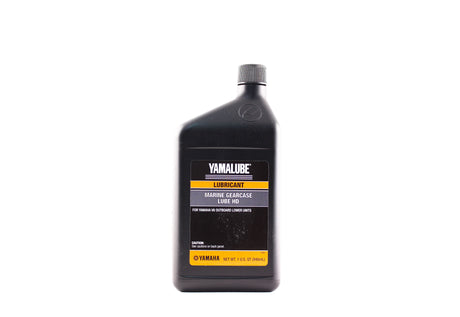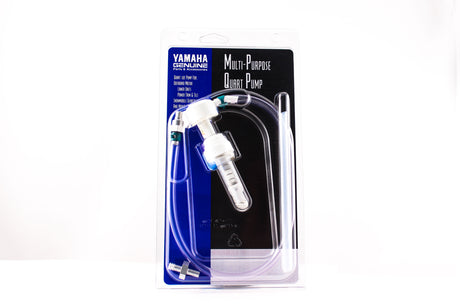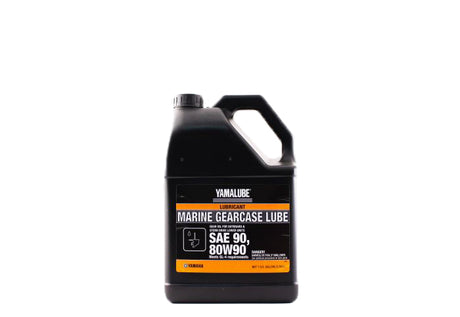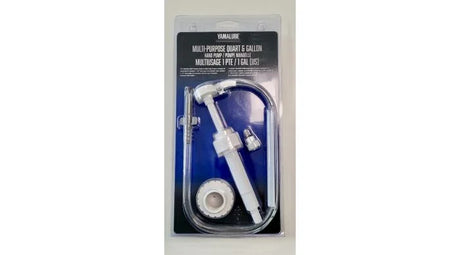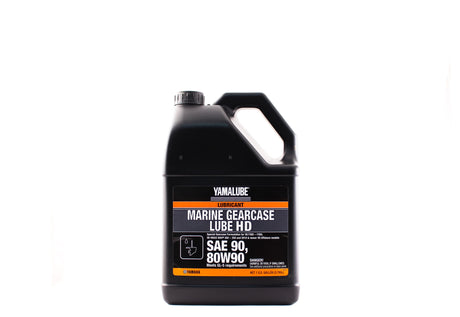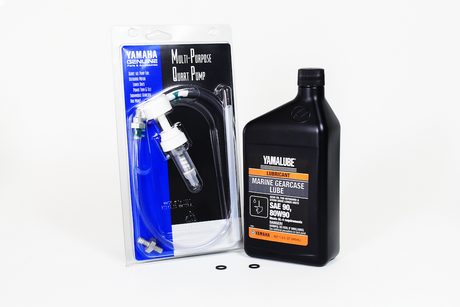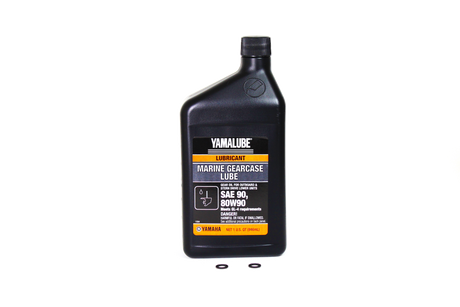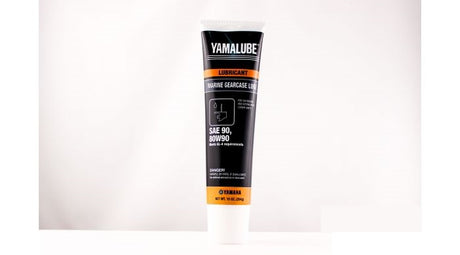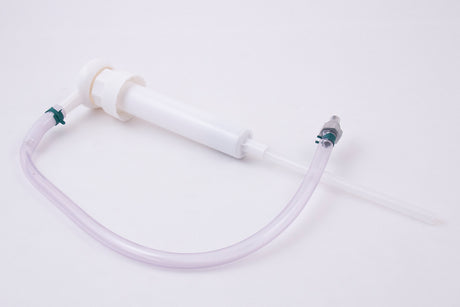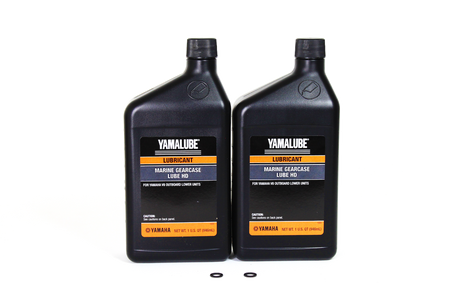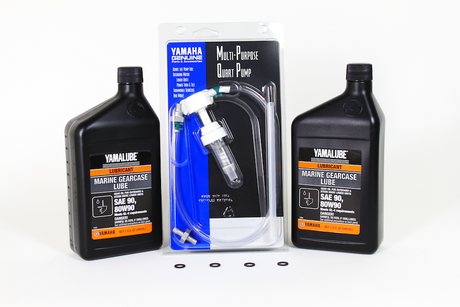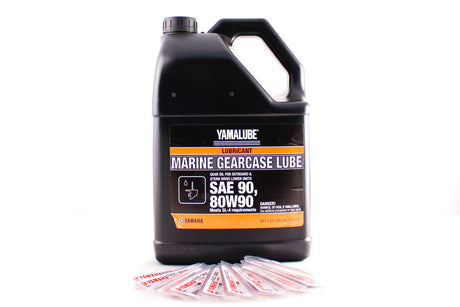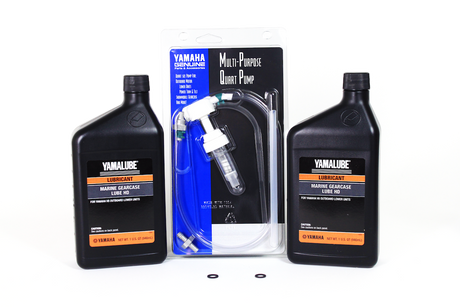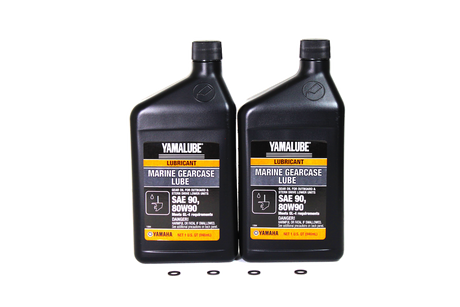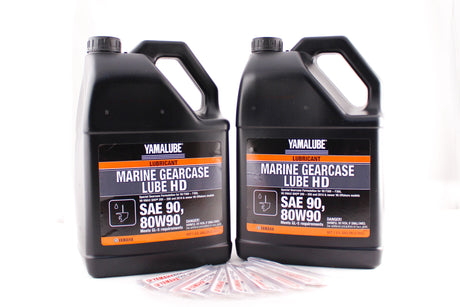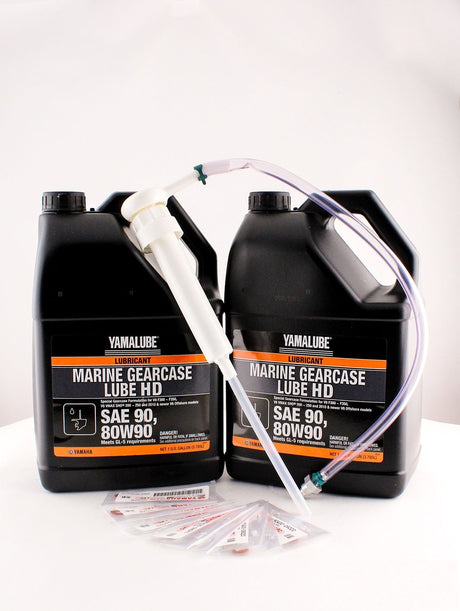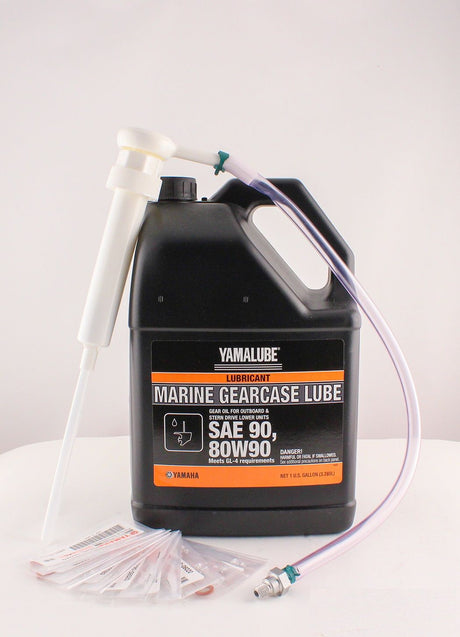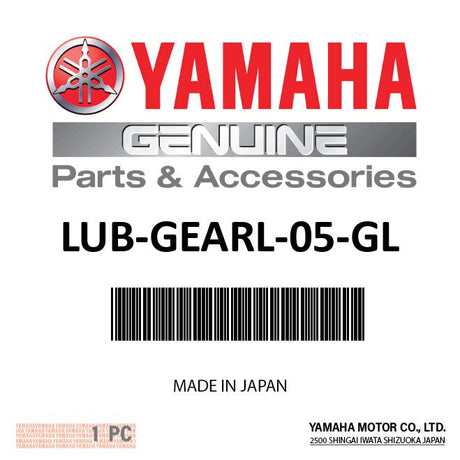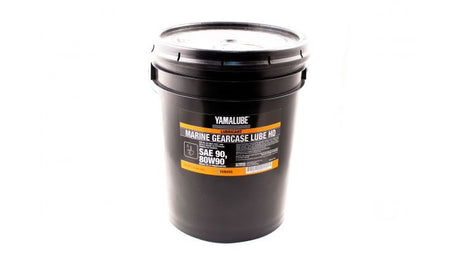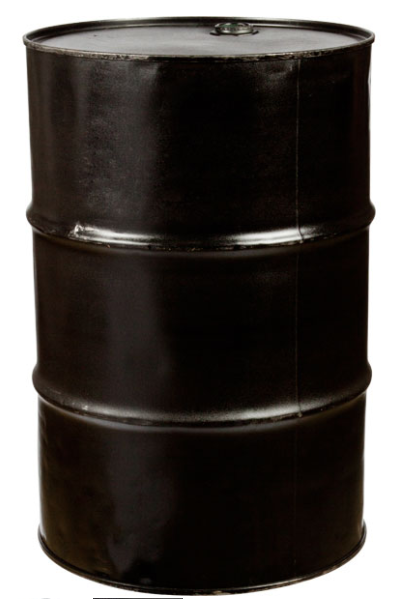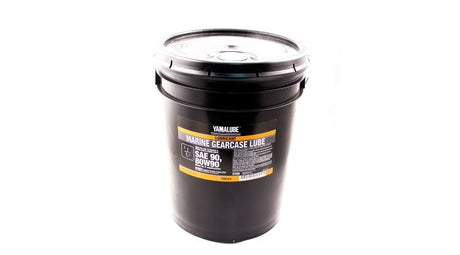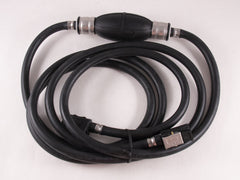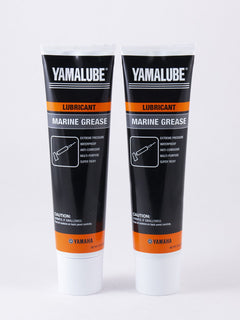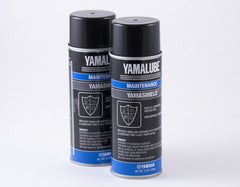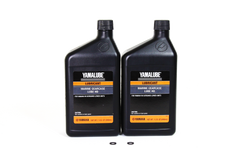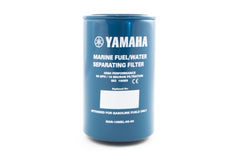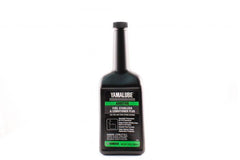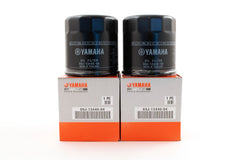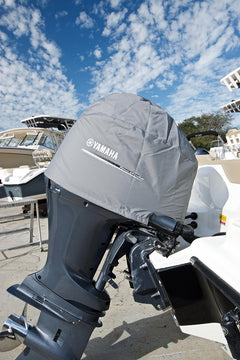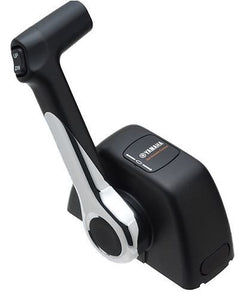Yamaha
Yamaha ACC-GEARL-UB-QT - Yamalube Marine Gear Case Lube Oil - 32 oz.
$13.08 USD$13.75 USDUnit price /UnavailableYamaha
Yamaha ACC-GLUBE-HD-QT - Yamalube 4.2L V6 V8 VMAX SHO Marine Gear Case Lube Oil HD
$13.15 USD$13.85 USDUnit price /UnavailableYamaha
Yamaha ACC-PUMP0-00-QT - Lower Unit Gear Case Lube Oil Quart Pump Multi-Purpose
$26.04 USD$26.99 USDUnit price /Unavailable-
 Shop Now
Shop NowYamaha Spring Essentials
Yamaha
Yamaha ACC-GEARL-UB-GL - Yamalube Marine Gear Case Lube Oil - 1 Gallon
$37.14 USD$39.25 USDUnit price /UnavailableYamaha
Yamaha ACC-HNDPU-MP-01 - Multi-Purpose Quart & Gallon Pump
$26.04 USD$26.99 USDUnit price /UnavailableYamaha
Yamaha ACC-GLUBE-HD-GL - Yamalube 4.2L V6 V8 VMAX SHO Marine Gear Case Lube Oil HD - 1 Gallon
$41.25 USD$43.65 USDUnit price /UnavailableYamaha
$25.81 USDUnit price /UnavailableYamaha
$15.82 USDUnit price /UnavailableYamaha
Yamaha ACC-GEARL-UB-10 - Yamalube Marine Gear Lube - 10 OZ
$10.61 USD$11.20 USDUnit price /UnavailableYamaha
Yamaha ACC-PUMP0-02-GL - Multipurpose Gallon Gear Lubes Oil Pump
$26.04 USD$26.99 USDUnit price /UnavailableYamaha
$29.04 USDUnit price /UnavailableYamaha
$41.63 USDUnit price /UnavailableYamaha
$50.84 USDUnit price /UnavailableYamaha
$39.03 USDUnit price /UnavailableYamaha
$31.64 USDUnit price /UnavailableYamaha
$96.20 USDUnit price /UnavailableYamaha
$122.24 USDUnit price /UnavailableYamaha
$76.88 USDUnit price /UnavailableYamaha
Yamaha ACC-GLUBE-HD-05 - Yamalube 4.2L V6 V8 VMAX SHO Marine Gear Case Lube Oil HD - 5 Gallons
$193.70 USDUnit price /UnavailableYamaha
Yamaha ACC-GEARL-UB-55 - Yamalube Marine Gear Case Lube Oil - 55 Gallon Dum
$1,825.85 USDUnit price /UnavailableYamaha
Yamaha ACC-GEARL-UB-05 - Yamalube Marine Gear Case Lube Oil - 5 Gallons
$179.43 USDUnit price /Unavailable
Yamalube Marine Gear Lube
Keeping your outboard running smoothly requires high-quality Yamaha marine gear lube. Designed to handle the extreme pressures of marine environments, this gear lubricant protects lower unit components from wear and corrosion. Regular maintenance with Yamaha outboard gear lube guarantees optimal performance, reducing friction and heat buildup that can cause long-term damage.
Using Yamaha marine gear oil is essential for preserving the integrity of your engine’s lower unit. This specialized formula resists water intrusion to prevent foaming and breakdowns that can compromise protection.
Routine oil changes with Yamaha marine gear lube maintain peak efficiency and prevent costly repairs. Trusting Yamaha’s factory-approved lubricants ensures your engine runs at its best and allows you to enjoy uninterrupted time on the water with confidence.
YamahaOnlineParts.com provides gearcase lubricant, specifically designed for Yamaha outboard motors, to protect the components in the lower unit. This oil is formulated to safeguard the gearcase parts while running in both freshwater and saltwater, even at high speeds for extended durations. In addition, rust and corrosion inhibitors are included to prolong the life of the lower unit.
To help you service your Yamaha OEM parts and accessories with Yamalube products, we also offer these helpful resources:
- Yamaha outboard engine schematics
- Winterizing Yamaha Outboard Motors - Here's How
- Yamaha Ring Free Plus – Is It Essential?
- Guide to Yamaha Outboard Fuel Filters
- Yamaha Lower Units - Guide to Care & Maintenance
Yamaha Gear Lube for Outboard Engine Gearcase Components FAQs
Why lubricate my Yamaha lower unit gearcase components?
The internal components of your Yamaha's lower unit are in perpetual motion, and the only thing safeguarding them is the type of lubricant you use. This substance creates a microscopic layer between the metallic parts, stopping them from coming in contact with one another. With the immense strain these gears are under, the lubricant must offer extreme resistance to pressure, foam, and shearing. Additionally, since the lower unit is submerged, the lubricant must be able to keep its properties while water is present if it seeps inside. Automotive or tractor gear oils are not suitable for this purpose, so you should steer clear of them.
A premium marine-grade lubricant, such as Yamalube Marine Gearcase Lube, is suitable for all the necessary maintenance and lubrication tasks, even in the presence of 10% water. Moreover, they also have a HD formula specially tailored to the higher requirements of Yamaha's V MAX SHO, 4.2L V6 Offshore, and 5.3L F350 V8 outboard lower units.
How perform a lube change on my Yamaha outboard motor?
Yamaha suggests that for its new outboards, the lower unit's lubricant should be replaced after the opening twenty hours and then each hundred hours after that. Additionally, if the Yamaha gearcase lube appears milky, smells burned, or looks scorched upon inspection, it is time for it to be changed. To do the job yourself, put a bowl beneath the lower unit's bottom drain screw, take out the screw and then unscrew the upper vent screw located on the lower unit's side. Permit all of the lubricant to run into the container. As you wait, check the drain screw. It has a magnetic property, so any metal shavings or particles that may be in the lube will be drawn to it.
It is expected to find some tiny metal particles in the oil pan, however, if there are bigger pieces of metal on the screw or in the oil, it is advisable to let your local Yamaha Marine dealer inspect the outboard for potential internal damages. At the same time, a new crush washer (sometimes referred to as a "drain plug gasket") needs to be put in place. If there is no visible washer at the screw, you may use a pick to take it out from the outboard. These washers must be discarded and replaced every time the screws are unscrewed.
The drain screw crush washers are one-time use seals that prevent water from entering the lower unit and contaminating the lubricant. Do not attempt to save money by not replacing these washers, as the cost of a Yamaha lower unit is substantial. It is advisable to always keep spare washers available. Additionally, a Yamalube Gear Lube Kit provides all of the necessary parts and lubricants for the job.
After the old lube has been completely emptied, secure the right fitting into the drain screw opening of the lower unit (at the bottom of the bullet) and gradually add in new Yamalube Marine Gearcase Lube or Lubricant HD. As soon as you see the fresh fluid leaking out of the upper vent screw hole, pause for 5 minutes then proceed carefully until it seeps out of the vent screw again. At that point, replace the vent screw with a new crush washer and fasten it according to the manufacturer's guidelines. Unscrew the fitting from the drain screw opening and quickly put back the drain screw with the new crush washer attached. Make sure to tighten it according to the manufacturer's specifications.
You have the option to carry out these tasks on your own or get your certified Yamaha Marine dealer to do it for you. It is important to complete these procedures to ensure your boat continues to function properly and you continue to be happy with it.
Check out YamahaOnlineParts.com’s selection of handy and ready-to-use Yamaha Gear Lube Kits!
How do I inspect my Yamaha lower unit for signs of wear?
It is important to take a look at the outside of the Yamaha lower unit prior to each outing. Especially if you use the vessel for fishing, it is best to remove the propeller every 50 hours or so (or as needed) and see if there is any fishing line that could have gotten wrapped around the prop shaft. This can lead to damage and leakage of the prop shaft seals. Finally, it is important to check the color of the lower unit lubricant by opening the "drain screw" at the bottom of the bullet and the "vent screw" at the side of the lower unit. Let a small amount of the fluid drain into a clean container.
If the lubricant appears milky, it indicates that there is water in the oil. It is best to have your Yamaha Marine dealer inspect the lower unit seals using a pressure test, and if needed, have the seals changed. A pressure test of the lower unit should be conducted by an authorized Yamaha Marine dealer as the results may necessitate the disassembling of the lower unit for further examination.
If you are already in the vicinity, take the chance to lubricate your propeller shaft, bearings, and any other areas of wear and tear – Yamalube Marine Grease is a great option to use.
How do I service my Yamaha outboard lower unit?
To drain the Yamaha lower unit gear lube, start by taking out the lower drain plug and then the upper air vent plug. These plugs are usually visible on the lower unit, but if the engine has a lower water pickup, then the forward pickup should be removed to get to the drain plug. Tighten the screws with a screwdriver and a wrench, but sometimes an impact driver and hammer are needed, depending on who did the last maintenance. The drain plug has a magnetic top, so once removed, check the plug to see if there are heavy build-ups. Small filings are normal, but bigger pieces of metal or bigger amounts of it require further inspection. Have a container and some rags in case the gear lube starts to drip out of the skeg when the upper vent plug is taken out. Make sure to put the fiber gaskets from both plugs in a safe place after taking them out, as they are not reusable and should be thrown away.
Why should I purchase a Yamaha marine gear lube kit?
Obviously, as part of the standard maintenance schedule, replacing the lubricant for the gears is necessary. Having the necessary components and Yamalube gear lube ready beforehand makes it easy to complete this essential task.
- Your Yamaha outboard motor will begin to wear out shortly after it's been in the water. Heavy usage, corrosion, improper storage and a lack of maintenance will drastically reduce its lifespan. Yamaha produces high-quality outboards that can last many years, but you must take care of it to make sure it performs to the best of its ability. Not regularly switching out the lower unit's oil with Yamalube lubricant will lead to a seized engine, resulting in expensive repairs and a decrease in performance. To save money in the long run, it's wise to keep a Yamaha marine gear lube kit on hand.
- It is said that "A boat is a hole in the water you throw money into," which is true for some costly outboard repairs. To save time and money, you should have the right parts and products close by so you can do your own maintenance. Home repairs can be finished in a few hours and are much more affordable than taking your boat to a professional mechanic. DIY repairs are an efficient and cost-effective way to keep your boat in good shape.
- Keeping your Yamaha outboard healthy requires frequent maintenance and a special type of lubricant called marine gear lube. Oil and grease are the primary lubricants that protect the outboard from needing repairs, so it's important to check them regularly and replace them if they become milky, smoky, or dark. One common question is whether regular gear oil can be used instead of lower unit oil, which is designed to contain additives that help it resist moisture. Lower unit oil is necessary because the outboard spends a lot of time in water, and emulsificantes help it last longer and perform better.


